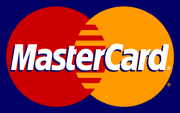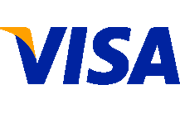New IRS Reporting Requirements Have Implications for Businesses Large and Small
A provision deep within the recent Patient Protection and Affordable Care Act (Public Law 111-148) will drastically change record keeping and processing beginning in January 2012. This has dramatic and serious implications for Information Technology professionals, who must architect, design, and implement the business and information processes needed to collect the required data and produce the required reporting. These rules apply to all businesses, from the one-man office to the top of the Fortune 10. Section 9006 of the Patient Protection and Affordable Care Act amends Section 6041, amending subsection (a) and inserting new subsections (h) and (i) of the US Internal Revenue Code of 1986 altering the rules for reporting business transactions to the Internal Revenue Service. Previously, Form 1099-MISC was used to report payments to unincorporated independent contractors and similar payments for services. Payments for goods were exempt from this requirement, as were payments to corporations. Both of these exemptions were removed by the recent legislation.
Recently, Stealth IRS changes mean millions of new tax forms, a Money article by Neil deMause took note of recent changes enacted by Congress that expanded requirements for reporting transactions to the IRS. Dissecting these changes, the two changes have dramatically different impacts. Removing the corporate exemption does not change the underlying extant processes; it merely requires that Forms 1099-MISC be generated for payments to corporations. This requires modest changes to procedures and has modest impact.
In this respect, the removal of the corporate exemption is along the same lines as the previously enacted requirements under the Housing Assistance Tax Act requiring that third-party payment processors (e.g., PayPal, First Data) report the proceeds of those accounts with over 200 transactions with a total aggregate value of more than $ 20,000.00/year. This aggregate information is already being accumulated by the processors, and compliance with the reporting requirement is merely a question of producing the required filings. It is an incremental step that does not require re- engineering of business processes on a significant scale. It is little different from a change in the format of the monthly statement issued to the merchant. Additionally, merchants should be reporting these proceeds and the reported numbers are easily reconciled with the merchant's ledgers.
The broadening of reportable events to include “goods” is a far different question. Presently, Form 1099-MISC is used to report payments to an unincorporated vendor for services whose value exceeds $ 600.00 in a calendar year. Most vendors are paid through Accounts Payable processes, and it is a straightforward matter to report those whose aggregate payments are in excess of $ 600.00/year. The expansion to “goods” brings out a compliance problem would not be a significant crisis, if it were indeed limited to those vendors who are paid through Accounts Payable. The requirement is far more embracive, and therein lies the IT and business process problem for all businesses, from the very small to the top of the Fortune 10. It is the fundamental change required by this reporting and its impact on Business and Information Technology processes that is devastating.
Information Technology is about processes: Industrial processes, business processes, compliance processes and others. New or revised processes often require new information to be accumulated and processed require corresponding changes throughout the overall Information Technology ecosystem. Such global changes often have complex implications and consequences. Ten years ago, we saw an example in intense activity dealing with the implications and consequences of converting to four-digit year numbers, a drama referred to as “Y2K”, the Year 2000 problem. Y2K was an internal crisis, caused by the common, short-sighted use of two-digit representations for calendar years that had far outlived its utility, a point I have made in several presentations since long since 1989.[1] I summarized this aspect of the “Y2K Crisis” in a presentation at the Los Alamos National Laboratory during Engineers Week in 2006.[2]
Y2K was an internal IT decision that had external implications. Often, the converse is more common: An externally imposed requirement has severe Information Technology implications, particularly if the required raw data is not presently gathered. These expanded requirements are an example of just such an external requirement.
Using the legislative language as written, it would appear that even a modest small business could easily be required to file dozens of 1099-MISC forms on routine everyday operating expenses.
Clearly, ongoing relationships with established accounts are not the problem. Rather, the problem is expenses that are currently flow through the Petty Cash (or equivalent) accounts. Many companies do not use conventional Accounts Payable processing for large numbers of modest expenditures: office supplies, parking, airfare, hotels, rental cars, meals, and numerous other items. Many of these items are purchased by the employees directly involved using either cash out-of-pocket and personal credit cards. Sometimes, firms have arrangements for dedicated business credit cards, but they are by no means the universal solution.
Presently, the amounts and categorization of these expenses are captured by accounting processes. The precise corporate identity, address, and Employer Identification Number of the merchant are rarely captured by these processes. However, production of a Form 1099-MISC requires this data. Capturing this data requires new business processes, new forms and formats, and a potentially dramatic expansion of present Accounts Payable databases to include all of the merchants who supply the firm with goods. Adding merchants to the Accounts Payable or equivalent database is not presently a volume process. Incrementally including Petty Cash disbursements in the Accounts Payable process for the purposes of aggregation would be a dramatic increase in scope.
For small businesses, it is a dramatic increase in the scale of required paperwork. Each single road trip can in theory generate five to ten new vendor accounts to be aggregated. This increase in paperwork is painful and expensive.
For larger enterprises, with large numbers of employees in the field doing necessary petty cash transactions, it is a Kafkaesque nightmare. Without coordination, employees may independently take actions which will require a Form 1099-MISC (e.g., five salesman stay at different hotels, which though they have different brands and names, are operated by the same company). The cost of the data gathering and maintenance may very well exceed the expense recorded. This is the original reason for petty cash disbursements. This is a dramatic change from present practice. Presently, documentation for de-minimus expenses is limited; generally not requiring detailed receipts for expenses below a certain threshold, generally $ 25.00. Even expenses exceeding this threshold required receipts, but no additional data gathering. It is more complex than most realize. Chain hotels (e.g., Holiday Inn, Hyatt, Ramada, Hilton) are not single properties, they are chains of hundreds of different corporate entities operating under a single banner. Some properties are operated directly by a subsidiary of the corporate parent; others are owned by outside investors, but have some form of affiliation that allows them to be branded. Some hotel operators have multiple properties, operating under different brands. The only reliable way to aggregate the required information is to record the Employer Identification Number from each receipt, with the legal address of the merchant from each invoice, eliminating duplicates. This requires a dramatic increase in the scope and scale of data capture.
Hotels are but a single case. Many other merchants have comparable arrangements; restaurants and rental car agencies are also often structured using similar arrangements. It is important to note that these thresholds are per firm, not per employee.
Some examples:
| Parking: | In Manhattan and other urban areas, parking fees frequently exceed $ 20.00/hour. Many parking vendors are owned or operated by chains. Park 30 hours/year; generate a Form 1099-MISC. |
| Airlines: | Fly during the year; generate a Form 1099-MISC per vendor (e.g., airlines, travel www site, consolidator) |
| Copying: | Make 6,000 copies in a year at one store, or a chain of stores; generate a Form 1099-MISC |
| Meals: | Visit a restaurant or restaurants with common ownership 30 times per year; generate a Form 1099-MISC |
| Hotels: | Five nights in hotel; generate a Form 1099-MISC |
| Rental Cars: | Two to three weeks of rental car use on a trip; generate a Form 1099-MISC |
| Chain Stores: | Supplies, coffee, and miscellaneous items; generate a Form 1099-MISC |
The present legislation appears to exclude payments to exempt organizations, so transit fares and tolls to governmental entities (private tolls roads may be covered, a subject that requires consulting with your tax advisor) do not presently fall under the requirement. Yet, they are instructive as to how easy it is to exceed the $ 600.00 limit:
| Tolls: | In Metropolitan New York, many bridge tolls are between $ 6.00 and $ 11.00 per round trip. Make 60 trips per year; generate a Form 1099-MISC |
| Transit Fare: | Make 150 trips per year; generate a Form 1099-MISC |
On the vendor side, the answer is straightforward, do what is required in countries with a VAT, each receipt or invoice should include the Employer Identification Number.[3]
It is not only the purchaser of goods who is impacted by this requirement, vendors are impacted as well. When a Form 1099-MISC is produced, there are three copies: one for the reporting party, one for the Internal Revenue Service, and one for the receiving party. Clearly, the reporting party could keep the resulting material electronically. The Internal Revenue Service regulations will likely all but require electronic filing of the forms. That leaves the copy that must be sent to the receiving party.
Remittors have a dauting paperwork challenge, but it is a challenge of process and volume. Remittors as a group are far better off than the remittees. Chain stores, hotels, airlines, and other enterprises will receive a Form 1099-MISC from each and every entity that has spent more than $ 600.00/year. In most cases (e.g., excluding store issued company credit cards and resale accounts), there will be no way to correlate and reconcile the received Forms 1099-MISC with actual transactions. In addition, each merchant will have to file and index the Forms 1099-MISC.
Consider the simple case of a 100-room hotel with an average room price of $ 100/night. The hotel can sell 36,500 room-nights/year. Assuming 100% occupancy, and 100% compliance, this ONE hotel will receive over 6,000 Forms 1099-MISC (excluding meals, meeting rooms, and other services). Many of these forms will be aggregations of individual invoices, which may or may not be identified with the remitting firm, It is a reconciliation nightmare.
HR 5141, the Small Business Paperwork Mandate Elimination Act repealing Section 9006 has been introduced by Representative Daniel Lungren (R-CA) on April 26, 2010. As of this date, this resolution has 67 co-sponsors and has been referred to the House Ways and Means Committee for further consideration. Whether this legislation emerges from the Committee and is enacted into law is far from certain.
The expanded Form 1099-MISC program takes effect in 2012, and the applicable regulations have not yet been published, much less finalized. On the other hand, implementing the business and technology processes to comply with this requirement may well require a fair fraction of the time between now and the beginning of the requirement to aggregate the spending data. Vigilance is necessary to avoid being caught unawares by this requirement.
Notes
| [1] | “Implementing Applications Efficiently in a Distributed VAX/VMS Environment” DECUS Pre-symposium Seminars, May 5, 1989 Atlanta, Georgia |
| [2] | “Time as a Microcosm: Was the Year 2000 Crisis Inevitable?” Los Alamos National Laboratory and IEEE Computer Society Los Alamos and Northern New Mexico Chapter, Los Alamos, New Mexico, February 23, 2006 |
| [3] | A practice that my firm has been following for decades. Our billhead prominently lists our Employer Identification Number. Despite this practice, we routinely receive queries from clients as to our Employer Identification Number. |
References
- R. Gezelter “Implementing Applications Efficiently in a Distributed VAX/VMS Environment” DECUS Pre-symposium Seminars, May 5, 1989 Atlanta, Georgia
- R. Gezelter “Time as a Microcosm: Was the Year 2000 Crisis Inevitable?” Los Alamos
National Laboratory and IEEE Computer Society Los Alamos and
Northern New Mexico Chapter, Los Alamos, New Mexico, February 23, 2006
Retrieved from http://www.rlgsc.com/ieee/losalamos/2006-02/timemicrocosm.html on May 25, 2010 - N. deMause, “Stealth IRS changes mean millions of new tax forms”, May 21, 2010. Retrieved from http://money.cnn.com/2010/05/21/smallbusiness/1099_deluge/index.htm on May 24, 2010
Congressional Legislation
- Small Business Paperwork Mandate Elimination Act (HR 5141)
- Patient Protection and Affordable Care Act (Public Law 111-148)
- Housing and Economic Recovery Act (Public Law 110-289)











![Validate my Atom 1.0 feed [Valid Atom 1.0]](http://images.rlgsc.com/logos/valid-atom.png)
![Validate my RSS feed [Valid RSS]](http://images.rlgsc.com/logos/valid-rss.png)

